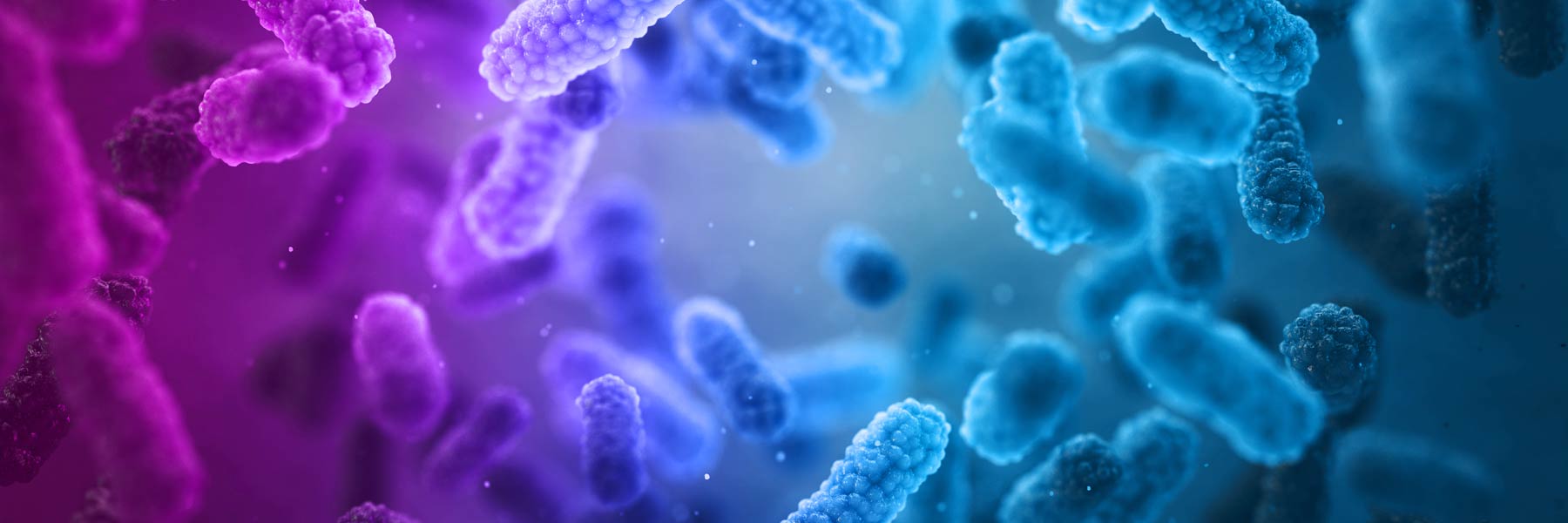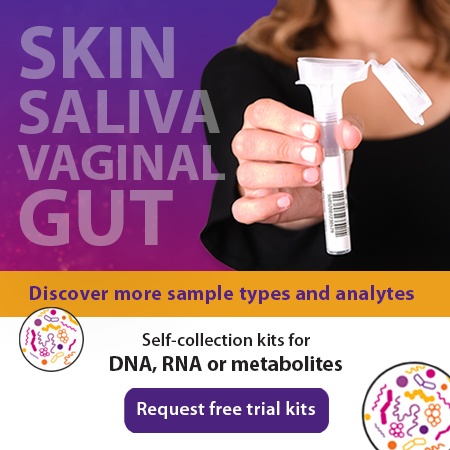2019-06-06
At the Translational Microbiome Conference (TMC) in Boston this May, a discussion panel, moderated by DNA Genotek’s Aaron Del Duca, covered the new and expanding field of multiomics. The panel consisted of Dr. Stephan Reiling (Computational Scientist at Kaleido), Dr. Annie Evans (Director of R&D at Metabolon), Dr. Dan Knights (CEO and Co-Founder of CoreBiome), and Dr. David Riglar (Post-Doctoral Fellow in the Department of Systems Biology, Harvard).
Mr. Del Duca steered the conversation to a number of important themes on multiomics experimental design and computational analysis. We’ve captured a few highlights from the conversations that took place during this panel presentation at TMC and provided the full video as well.
What is Multiomics?
Multiomics is defined as the approach where the insights from two or more “omics” data sets (genomic, transcriptomic, proteomic, metabolomics, lipidomics, immunomics, etc.) are combined during the analysis to derive biological correlation or association.
Theme #1: We can generate big data with reasonable efficiency, but we’re playing catch-up with the analytical tools
Mr. Del Duca began by highlighting how current microbiome analytical tools can become much more effective when integrated in multiomics and systems biology in the same way that bricks work together to form an arch.
“Multiomics requires very robust framework with chemistry, biology, and statistics to meaningfully integrate omics data, to help it all hang together and support the things that need to get built. Our goal is not only to uncover things but to build frameworks for analysis as well.”
Are there strategies or specific approaches that are not yet widely understood to enable the large scale of a multiomics approach?
Dr. Reiling: “In the field of microbiome, we just established how to run good metagenomics studies with stool samples – but in regards to other omics (specifically transcriptomics, metabolomics) it has yet to be fully established. However, once these are addressed, I can see it as a standard going forward.”
Dr. Knights: “There are a lot of incredible capabilities for doing some of these but they don’t work at scale yet. We are at a point where we generate massive amounts of data. Technology to enable that scale is very important. For example: To flip a switch from generating massive amount of transcriptomic data sets, and then to generate a massive metabolomics data set and combine the two in a cost effective way.”
Dr. Evans: “There is a need in this community to be able to make use of the multiomics. The power of the technology is there but it would be ideal if a software package that allows us to mine that data easily existed. I always say about software companies “are they doing it yet?” It is going to be a challenge moving forward.”
Mr. Del Duca: “In the end our ultimate goal is to connect the omes, we just don’t have all the tools for that yet.”
Theme #2: Mechanisms vs modeling
Now that we understand multiomics a bit more and the potential it could have, how do we figure out how to model it? At the end of the day will mechanisms win over modelling multiomics research (hypothesis driven research or machine learning/AI driven research)?
Dr. Reiling: “I have my two hands. On one hand is the scientist who wants to understand things and the other hand is the machine learner who just wants to model and hopes for the best. Ultimately, there will be a divide. Do you want to learn something about the underlying function of the microbiome or do you want to model it to stratify patients or use it for other purposes? If you just want a model that works then you would run the experiments accordingly and manipulate the data accordingly. If you do care and want to understand what is going on, you would use the multiomics as a first entry-point to do a broad profiling and drill down into specific aspects that you see in the multiomics studies. In the end there will be a divide.”
Dr. Knights: “I believe that people conceptualize machine learning as a black box, where you just give it a ton of inputs and you get an answer. And either it works or it doesn’t. But if you look at machine learning and AI in the past 20 years, there is always a point for whatever task it is that people are trying to solve, you have experts translating what is going on in the world into features that machine learning can understand. Once you get the right language, the right sets of features, put some structures around the data, and inform the machine learning about it…it becomes more powerful. It is the combination of the two: having people who are experts in mechanisms informing the people who are designing the machine learning algorithms.”
Theme #3: Translations
In order to translate all this data, we have to ground this in the tools, methodologies, and approaches. What are some of the essential standards that we need to develop as a community to build on these things and progress forward?
Dr. Evans: “While I think standardization technology is going to be difficult, what I can see is defining the appropriate guidelines of quality as a community. What makes good metabolomics quality data? What does it look like? Coming up with acceptable guidelines for the community is going to be a huge start in the discovery mode so we can start talking the same language to make sure we understand the quality of all of our different methods and how to compare across technologies..”
Dr. Riglar: “I find that going back to the 16S sequencing of the microbiome is a nice way to look into that kind of standardization. If you look across labs that have done extraction, sequencing, and analysis – you actually cluster a lot of the variation that you see across the microbiome. I think that 16S is interesting, because it has been around for longer and there has been more of a chance to progress towards standardization. It is important to have an expectation across the community of making an effort to look at cross validation across different methods and not just relying on one methodology (which the multiomics approach helps).“
Like Mr. Del Duca described, we at DNA Genotek ultimately want to connect the omes, uncover new biological pathways, and use our materials to build a robust framework for multiomics research. Do you think multiomics could have an impact on the future for medical research? Let us know in the comments below.
If you are interested in learning more about the future of multiomics, you can watch the full panel discussion video here.


